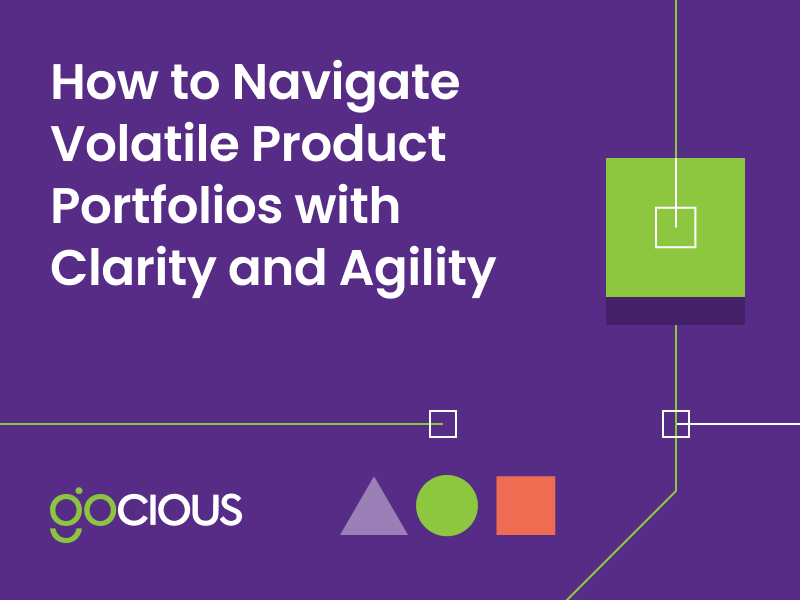
Subscribe to our blog
Ready to improve your roadmapping process?
Curious about how Gocious can help your manufacturing team transform its Product Lifecycle Management strategy? Let’s schedule a call to explore!
Product Management Articles
Maziar Adl

Recent Posts
5 Ways Product Roadmap Software Improves Demand Management for Heavy Industrial Equipment Manufacturers
Successful manufacturers stay ahead of the market by delivering what their customers want before they even ask for it. How do they do it? They listen to their customers, collect valuable insights, and integrate these signals into their product roadmaps. This knowledge allows companies to innovate with confidence, guided by real-time insights.
Mastering Modular Product Architecture: Accelerate Innovation and Scale Smarter in Manufacturing
In today's industrial landscape, modular product architecture isn’t just a design preference — it’s a strategic advantage. Manufacturers can accelerate development cycles by standardizing core modules across product lines, strengthening supply chains, and responding to shifting market demands with speed and precision.
How Product Roadmap Software Fuels Modular Innovation in Medical Equipment
Like many industries, medical equipment manufacturing is undergoing rapid transformation. As devices become more connected and complex, manufacturers must meet rising demands for personalized care, operational efficiency, and regulatory rigor. To stay ahead, leaders in this space are embracing modular product architecture—and they’re managing this complexity with powerful product roadmap software.
How to Navigate Volatile Product Portfolios with Clarity and Agility
In today’s fast-paced, tech-driven market, volatility is an ever-present challenge. Product portfolios are under constant pressure from shifting market conditions, evolving customer expectations, and tightening regulations. For product managers, navigating this volatility requires more than just quick reactions—it demands a strategic, data-driven approach.
How to Implement a Winning Product Portfolio Strategy in Your Organization
Success in manufacturing isn't solely about developing great products—it's about managing them strategically. Industry-leading organizations use product portfolio strategy to balance innovation, optimize resources, and align their product options with their broader business goals. Without a strategic plan, companies risk losing market relevance or stalling growth.
5 Common Mistakes to Avoid in Cyber-Physical Product Planning
Cyber-physical products—integrated systems that blend hardware, software, and connectivity—dominate automotive, medical device, and industrial manufacturing industries. From self-driving cars to smart medical devices, these systems require seamless operations in real-world environments. These requirements make the design and development uniquely complex.
Beyond the Framework: Essential Skills Product Managers Need to Make Strategic Product Decisions
Product management requires staying up-to-date on trends and customer feedback while continuously coordinating with stakeholders. These objectives become especially challenging with complex products and large product portfolios. Managing complex product portfolios becomes easier with invaluable tools like Agile, Stage-Gate, and Waterfall frameworks because they provide structure, promote alignment, and help teams meet their project goals on time and closer to the projected budget. However, these frameworks, while powerful, are not silver bullets. They don't make strategic decisions for you.
Double Click: Gocious Adaptive Roadmaps
Explore the Benefits of Customizable Dashboards for Greater Alignment and Transparency
Roadmaps drive alignment, transparency, and strategic decision-making across product teams. As a central hub for planning and execution, they enable product managers to visualize goals, track progress, and communicate updates effectively. In fast-moving industries, having clear, well-structured roadmaps empowers teams to navigate complexity, ensure feature traceability to customer needs, and adapt quickly to changing market conditions.
Product Management Glossary: Key Terms and Their Definitions
The world of product management encounters an array of technical terms, phrases, and acronyms that can confuse even seasoned professionals in the product management realm. To aid both aspiring product managers and those who want to master their field, we’ve created this comprehensive glossary of fifty essential product management terms and their definitions to help you collaborate better with your colleagues and boost your knowledge.
Bridging the Gap: Product Management Strategies for Hybrid Hardware-Software Development
Product management is a multidisciplinary function that focuses on transforming ideas into tangible outcomes by guiding them through strategic planning, development, and delivery. Product managers and their teams create a central hub for aligning cross-functional departments, including development, engineering, marketing, and sales, to ensure that products meet market demands and business objectives.
7 Trends in Cyber-Physical Product Management Product Managers Need to Follow in 2025
Understanding emerging trends empowers product managers to make smarter decisions about their product portfolios. Staying in the know also helps product managers anticipate market demands, outpace competitors, and champion meaningful innovation. By staying informed, product managers can position their products, teams, and organizations for long-term success in an increasingly connected and technology-driven world.
Mastering Sustainable Product Lifecycles: Smart PLM Strategies for Modern Manufacturing
Concerns over climate change, pollution, and resource depletion drive a growing global environmental consciousness. Individuals, businesses, and governments recognize the need to prioritize sustainability at all levels of business and society. This shift in mindset is reshaping industries, policies, and daily habits, which for manufacturers means focusing on more sustainable product lifecycles.












